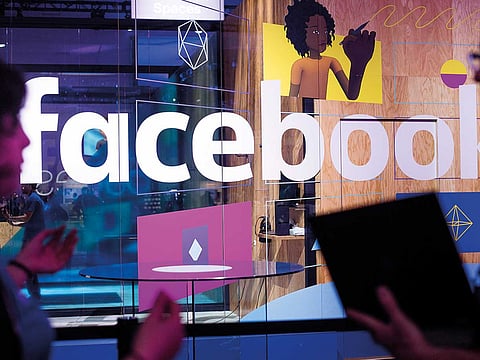Facebook turns its attention to the storefront
Its clout as a mobile platform with 1.9b users is getting retailers streaming in

Dubai: Facebook as a storefront? And where you could get to seek out your favourite brands and what they have to offer at that particular time? In Facebook’s version of e-commerce, that’s just the way it should be.
But with a key point of difference compared with the likes of an Amazon. Facebook itself won’t be the platform on which products or services can be sold. That, according to Martin Bartell, its global head of retail and e-commerce strategy, is playing to Facebook’s strengths.
“In the past, the discovery [of a product] was done at the store; now, 70 per cent of product search is happening on mobile devices and 29 per cent in-store,” said Bartell.
“Retail needs a turnaround moment globally, particularly in offline.
“It’s a meltdown in offline retail, and that’s because retailers separate their online business and store business. They are taking much more time to do things. You need to manage online and offline at the same time.”
It was just over six months ago that the social media platform — and it’s the numero uno mobile site with 1.9 billion people — allowed retailers to promote their in-store inventory on Facebook. Based on the traffic to the site, it then measures “not only how many people saw the ad on Facebook, but who’s coming to the store and buying,” Bartell said. “That’s mapping the entire customer journey.
“Discovery on mobiles is impacting what’s happening in the store, with 36 per cent of all in-store transactions having a mobile touchpoint. That’s the big new thing for us.
“The role of Facebook is basically channelling the demand and traffic coming to our platform on to our retail and e-commerce partners. It is where people discover products and we are then redirecting people to actual retail destinations.
“It’s for the retailer to measure which product to push on the Facebook side and to measure the entire customer journey. If an iPhone or clothing ad on Facebook gets your interest and then you go to a store and buy. we basically combine our data with the retailer’s.
“A lot of retailers have a loyalty card. and when someone is buying, the retailer knows who bought the product. By combing these data sets, it can tell the retailer if the person who bought actually saw the ad on Facebook.
“For us, we monetise it in our normal advertising model — we don’t take any commission on what people are buying in-store. What we offer is just another layer to what we are doing.”
One would have thought that given its captive audience, it would have been easy enough for Facebook to own the entire buying process directly — that is someone viewing a product on the platform and then buying it there and then. In the US, it has been doing such transactions on-site, but primarily with small retailers. And Bartell insists that’s as far as the process would go.
“It’s not something we are focusing on as a strategic effort, and more of a service offering to SMEs,” he added. “What we are intent on is driving the customer journey to a transaction on the retailer website/app as seamlessly as possible. “In general, the retailer wants to own the customer. For big retailers who have best-in-class experience on their site, it makes sense to manage the customer end-action, including the transaction.”
Does that mean the retailer is a fully-fledged partner in the process than future competition for Facebook when it build its e-commerce scope further?
“The numbers prove it... that we are partners and with retailers working intensively with us,” Bartell said. “In my discussions, I am not getting that question of being a competitor.”
“Experts say e-commerce has 8-12 per cent of total retail, and in the US is roughly 10 per cent. The discovery process works on both Facebook and Instagram. Our algorithms are optimised for both to get the most business impact for partners.
“The Instagram Stories are coming to FB as well. And we are getting more on the Messenger and selling using a bot. It’s highly personalised and that’s happening directly between the customer and retailer.”
Mobile changes the way everything is sold
It used to be that the look of the inside of a store was all that mattered. Then it became the storefront as well, then websites. Now, how a brand looks within the contours of a mobile screen matters most.
“In the UAE, the amount of mobile-first commerce is already higher than the global average,” said Shant Oknayan, head of Mena and Pakistan, E-com/Retail/Online Services/Media at Facebook. “And 43 per cent of all transactions happen on mobiles.
“At Namshi, for example, 80 per cent of overall sales come from mobiles — becoming the single important touchpoint for both online and offline experiences. Real opportunity for business to jump in and become mobile-first as well.”
Sign up for the Daily Briefing
Get the latest news and updates straight to your inbox


